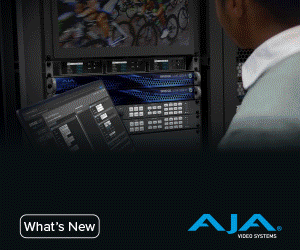4K Opinions & Interviews
Zeiss Unveils New Products & Plans for 2016
Zeiss recently opened up about upcoming projects, the impact of 4K and how compatible their lenses are for all of the new cameras that have just been released. Find out what they're blogging about (Lenspire) and what's on the horizon for 2016.
The Complete Path to Video Delivery in 4K and Beyond
With NeuLion's newly released white paper, "The Complete Path to Video Delivery in 4K and Beyond," Eric Grab, NeuLion Co-CTO expands further on how the introduction of 4K is shaping video quality, video interactivity, and the future of 4K technology. View the full white paper from NeuLion here: http://www.neulion.com/fls/30000/pdfs/NeuLionWhitePaper_ValueOf4K.pdf
Top 5 Hacks for Creating Crazy (Good!) Content
Big Leap Online Marketing Specialist, Matt Casady, shares his top 5 content creation tools that you need in your toolbelt. Familiarize yourself with them now and start putting them to use tomorrow! Matt Casady is an Online Marketing Specialist at Big Leap, he has a background in advertising and specializes in local search and content marketing.
Mark Sasicki on 4K
Mark Sasicki is a TV buyer for Abt Electronics and Appliances, the largest single-store retailer of electronics and appliances in the country and its national ecommerce site. He quickly chats about his thoughts on 4K.
4K: Then and Now
D.M. Rosemark shares his thoughts on 4K in our exclusive interview: "I am am filmmaker, film-theorist and multiple Jerome Grantee; I have actually gone back to 35mm and 16mm film-making because of some tangentially related issues on this topic."
VideoBlocks take on the 4K Experience
Joel Holland, founder and CEO of VideoBlocks (pictured here) tells us about 4K stock footage, trends and the consumption of 4K in the industry.
4K On Set
Arclight Productions have been shooting and finishing films—all in house—in 4K since 2009. They share their experience shooting their newest 4K documentary 'COUNTRY: Portraits of an American Sound' with us.
Get Clear Insight on 4K & it's Worth
4K has been hyped as the next big thing in video, but unless you are an A/V geek, it is all too easy to get confused about what it means. Yoel Zanger, CEO and Founder of Giraffic gives you the insight you need to understand 4K.
StarTech and 4K
Catch up on the latest 4K technology, trends and thoughts from John Mardinly, Senior Product Manager at StarTech.com.
ContentBridge on 4K
Contentbridge COO, Doug Reinart (pictured here) shares his insight on the 4K trend, along with products he sees might help consumers.
SGO's Miguel Angel Doncel Discusses the Energy and Excitement Surrounding NAB 2017
Miguel Angel Doncel, CEO, SGO, answers a few questions regarding NAB 2017, including new solutions created by SGO, technology to look out for and where you can find them on the showroom floor.
Revealing Bigfoot with Blackmagic Design: An Exclusive with Director Brett Eichenberger and DP Michael Ferry
Director Brett Eichenberger and DP Michael Ferry used Blackmagic Design to bring to life their latest film, “A Flash of Beauty: Bigfoot Revealed.” It was shot with a combination of Pocket Cinema Camera 6K Pro, Pocket Cinema Camera 4K and URSA Mini Pro 4.6K cameras in Blackmagic RAW, and then edited and graded using DaVinci Resolve.





